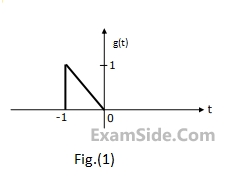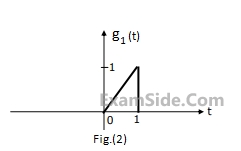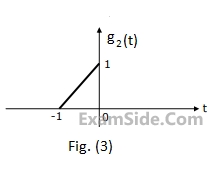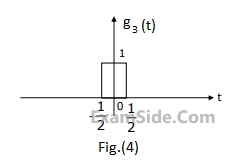Fourier Transform · Signals and Systems · GATE ECE
Marks 1
Consider a continuous-time, real-valued signal $f(t)$ whose Fourier transform $F(\omega)=$$\mathop f\limits_{ - \infty }^\infty $$ f(t) \exp (-j \omega t) d t$ exists.
Which one of the following statements is always TRUE?
Let $$m(t)$$ be a strictly band-limited signal with bandwidth B and energy E. Assuming $${\omega _0} = 10B$$, the energy in the signal $$m(t)\cos {\omega _0}t$$ is
The Fourier transform $$x(\omega )$$ of $$x(t) = {e^{ - {t^2}}}$$ is
Note : $$\int\limits_{ - \infty }^\infty {{e^{ - {y^2}}}dy = \sqrt \pi } $$
Marks 2
Consider two continuous time signals $x(t)$ and $y(t)$ as shown below

If $X(f)$ denotes the Fourier transform of $x(t)$, then the Fourier transform of $y(t)$ is ______.
Two of the angular frequencies at which its Fourier transform becomes zero are
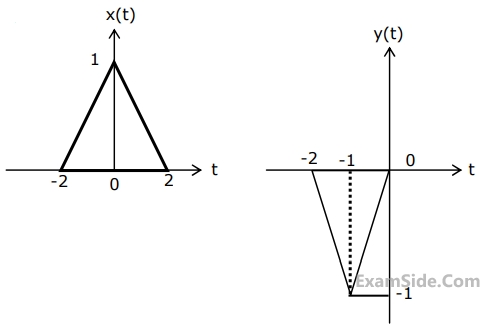
Then Y(f) is
Item-1
(1) The Fourier transform of g (t - 2) is
(2) The Fourier transform of g (t/2) is
Item - 2
(A) G(f) $$e^{-j\left(4\mathrm{πf}\right)}$$
(B) G(2f)
(C) 2G(2f)
(D) G(f-2)
Match each of the items 1, 2 on the left with the most appropriate item A, B, C or D on the right.
Marks 5
$$G(\omega ) = {1 \over {{\omega ^2}}}({e^{j\omega }} - j\omega {e^{j\omega }} - 1)$$.
Using this information, and the time-shifting and time-scaling properties, determine and Fourier transform of signals in Fig (2), (3) and (4).
